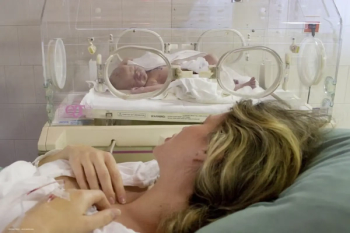
Study shows high compliance with early-childhood vision screenings, pinpoints parental limitations
The study underscored a need for tailored approaches among specific patient populations
A study which assessed how well parents complied with preschool vision tests found that parental consent and cooperation with vision testing and follow-up care were high,1 reported first coauthors Hilit Kerner Lavi, MD, and Tal Koval, MD. They are from the Department of Ophthalmology, Edith Wolfson Medical Center, Holon, Israel, and the School of Medicine, Faculty of Medical and Health Sciences, Tel Aviv University, Tel Aviv, Israel.
The research team conducted a prospective study to assess any barriers to parental compliance with vision testing in preschoolers aged 3 to 6 years. The rationale for the study was based on the widely-known impact of amblyopia in children. When left untreated, the brain does not process the visual input from one or both eyes, and this usually results in reduced visual acuity2; amblyopia affects 2% to 4% of children in developed countries and is considered the most common cause of vision loss in children2,3; early diagnosis and timely treatment are of the utmost importance in restoring vision in amblyopic eyes, as amblyopia can usually be treated if diagnosed before the age of 73,4 ; and vision screening tests at the age of 3 to 4 years can significantly reduce the risk of amblyopia from 2.39% to 0.299%.5
A total of 1,511 children (mean age, 4.76 years) from 46 preschools participated in the study. The parents were approached to provide consent to a vision screening test for their children. When consent was not obtained, the parents were contacted by phone and asked to compete a standardised questionnaire to determine why the consent was withheld.
The parents of 1,295 children (85.7%) consented to vision testing. The reason for the lack of consent in children who had never been examined by an eye care provider was unawareness of the screening test or other logistical reasons in 117 cases (92.1%), the investigators reported.
A total of 140 children (11.1%) failed the vision test. Follow-up by parents was high, with 80% of those parents obtaining the recommended eye care.
Language accounted for some noncompliance with the vision test recommendations. “Parents who followed the screening vision test recommendations were more likely to be native language speakers (82.8% vs. 58.8% mothers and 88.9% vs. 60.0% fathers; P = 0.049 and 0.015, respectively). There was a higher chance of at least one parent being native-born if recommendations were followed (90.6% vs. 58.8%, P = 0.004),” the authors commented.
No other factors studied reached significance.
Lavi and Koval and colleagues concluded, “Parental consent and cooperation with vision screening testing and its recommendations were high. Migrant families are more likely to face challenges in following vision screening test recommendations, underscoring the need for tailored approaches for specific populations.”
References
1. Kerner Lavi H, Koval T, Trifonov I, Reitblat O, Spierer O. Parental compliance with preschool vision screening test.J clin Med. 2025; 14:107. https://doi.org/10.3390/jcm14010107
2. Multi-ethnic Pediatric Eye Disease Study Group. Prevalence of amblyopia and strabismus in African American and Hispanic children ages 6 to 72 months. The Multi-ethnic Pediatric Eye Disease Study.Ophthalmology.2008;115:1229–1236.e1.
3. Atowa UC, Wajuihian SO, Hansraj R. A review of paediatric vision screening protocols and guidelines.Int J Ophthalmol.2019;12:1194–1201.
4. McKean-Cowdin R, Cotter SA, Tarczy-Hornoch K, et al. Prevalence of amblyopia or strabismus in Asian and non-Hispanic white preschool children: Multi-ethnic pediatric eye disease study. Ophthalmology.2013;120:2117–2124.
5. Guimaraes S, Soares A, Freitas C, et al. Amblyopia screening effectiveness at 3–4 years old: A cohort study.BMJ Open Ophthalmol.2021;6:e000599.
Newsletter
Get the essential updates shaping the future of pharma manufacturing and compliance—subscribe today to Pharmaceutical Technology and never miss a breakthrough.













































